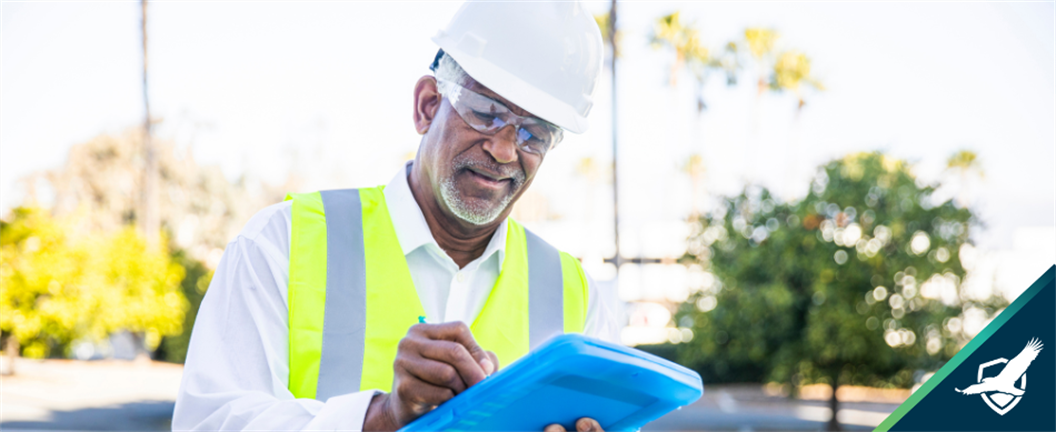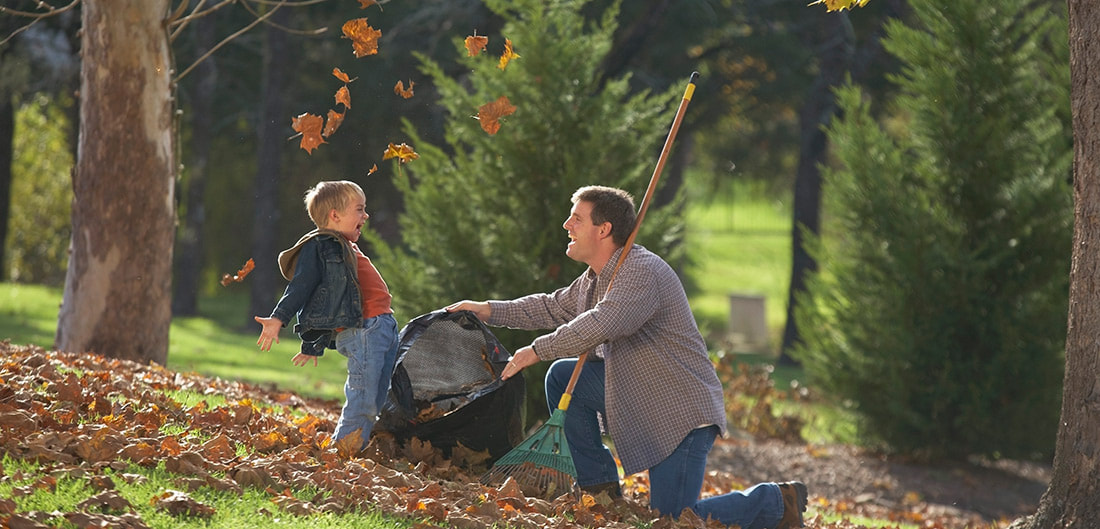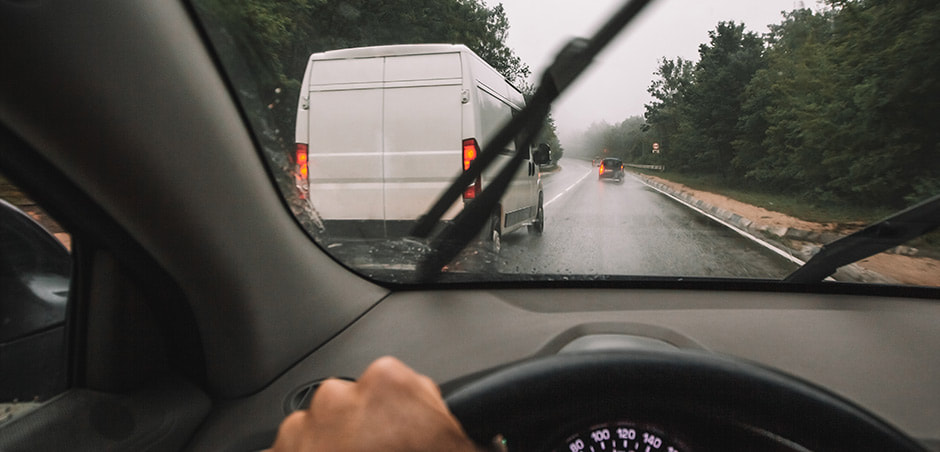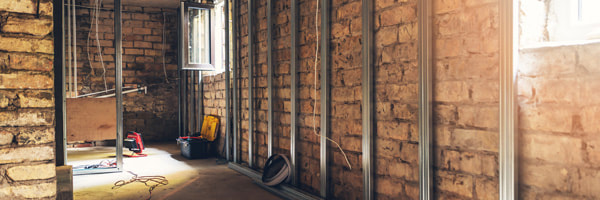 Retrieved from: https://www.grangeinsurance.com/tips/understanding-and-preventing-cyberattacks?utm_source=grangeagent&utm_medium=referral&utm_campaign=cyber All businesses are at risk for cyber security breaches. The first step in cyberattack prevention is understanding how damaging they could be to your operations. There are plenty of steps your business can take to make sure you’re at the top of your cyberattack prevention game. Educating yourself on what cyberattacks are and why they’re such a threat is a great place to start. What are cyberattacks and who is targeted? Cyberattacks can have many end goals: control a network, steal data, disable systems and more. Cyber criminals attack businesses of all sizes and industries, so it’s important to implement cyberattack prevention practices for the best protection. Many small businesses have an “it won’t happen to us” attitude regarding cyber security, until it actually does. Roughly 43% of all cyberattacks are targeted toward small businesses. This goes to show you don’t have to be a large corporation to benefit from cyberattack prevention measures. When it comes to your business operations and the protection of your employers, customers and clients, all data is valuable data. How and how often do cyberattacks happen? Cyberattacks occur about every 39 seconds and there are many reasons as to how they happen. Most of the time, they occur because hackers find a vulnerability in a business’s cyber security and exploit it. This could be anything from easy-to-guess passwords, clicking on a link riddled with malware or because your business doesn’t have any cyber security prevention or protection at all. That said, it’s best to follow online safety tips to avoid any attacks. Are cyberattacks really that dangerous? Yes! Cyberattacks are more sophisticated than ever and it doesn’t take much for hackers to access your, your customer’s or your client’s personal or financial information. For example, phreaks of the 1950s made free long-distance calls by hacking into telephone networks. The T-Mobile hack of 2021 exposed more than 50 million customers’ data with ease. Cyber security attacks saw a 600% increase since the beginning of the COVID-19 pandemic. Cyberattacks are becoming more and more damaging with new methods emerging all the time. The cost of an attack The cost of a data breach is different from case to case but there are a few certainties. In the short term, your business may face loss of revenue or fines from data protection regulators. Depending on your size, these costs vary in seriousness. If you’re a large corporation, you can probably bounce back. However, small businesses don’t typically have that luxury. As many as 60% of small businesses shut down within six months of a cyberattack. If you think those costs are bad, wait until you hear the long-term costs. The reputation damage businesses go through because of cyberattacks alone is enough to make you want to look into cyberattack prevention and cyber insurance, but the loss of trust among your customers is often the deciding factor in the future of a business after a cyberattack. Cyberattack prevention tips Follow these steps to protect your business, employees and customers from the actions of cyber criminals: Educate your employees - Believe it or not, data breaches can happen internally. Clicking links or responding to email phishing attacks happen all the time and are one of the most common cyberattacks affecting businesses. These links can steal your information as fast as you click on them. It’s best to have designated training sessions with employees to inform them about cybersecurity best practices. Only access secure sites - Sites that have ‘HTTPS’ before their URL indicate the site is secure. Be careful not to stumble upon unsecure sites because they’re perfect for hackers to add spyware or steal your information such as your credit card or date of birth. It’s good practice to block unsecure, untrustworthy sites so no one on your team accidentally happens upon one. Fortunately, there are countless site blockers out there to help you protect your business. Schedule company-wide password updates - It’s helpful to regularly update your passwords. Consider switching your password even before you’re prompted to. Encouraging unique passwords goes a long way in deterring any malicious activity too. For example, don’t use something easy to guess like your pet’s name. Only access sensitive data at the office - Network security, or lack thereof, is a big issue if many people work from home. Companies can’t ensure their employees have an advanced, secure WiFi network at home, making them targets for cyberattacks. If you’re working with sensitive data, it’s a good idea to set up schedules for employees to come into the office to work under a secured network. This is a small way you can help prevent cybercriminals from stealing your company’s or your customer’s information. Cyber Insurance - There are many ways to prevent cyberattacks with help from your Grange agent. Talk to an independent Grange agent to learn about cyber coverage for all eligible Business Owner Policies (BOP) and Commercial Package Policies (CPP). This article is for informational and suggestion purposes only. Implementing these suggestions does not guarantee coverage. If any policy coverage descriptions in this article conflict with the language in the policy, the language in the policy applies. For full details on Grange’s business insurance coverages and discounts, contact us! References Fundera AAG-IT CNET The Wall Street Journal PurpleSec Cybersecurity Ventures
0 Comments
Retrieved from: https://www.grangeinsurance.com/tips/before-you-loan-your-car
Have you ever loaned your car to a friend or family member when they were in need? It’s a kind gesture, but if they were to get in an accident behind the wheel of your vehicle, you may be uncertain whose insurance will cover the costs. Since accidents can happen at any time, it’s important to understand how your coverage works and ultimately who will cover accident-related costs. Here’s what to know before you loan your car. 1. Know your coverage. First, it’s important to know if the driver is covered by your insurance. Family members living in your household are typically covered by your insurance unless you expressly exclude them from your policy. If a friend or a family member who is not a member of the household borrows your vehicle with your permission and gets in an accident, you may or may not be liable for some of the costs depending on your policy, the state you live in, and if the other driver carries their own insurance. Always check your policy and be familiar with how your coverage works so you aren’t stuck with surprise costs after an accident. 2. Understand who pays. There’s a common misconception that the driver’s insurance will always cover an accident, but that’s not always the case. Most times, car insurance follows the vehicle. However, exact coverage will depend upon the language in your policy and the state you live in, which is why being familiar with the in’s and out’s of your policy is so important before someone loans your car. There are exceptions, of course. If the accident wasn’t your friend or family member’s fault, the other driver will pay for the accident and your insurance will be unaffected. Or, if your vehicle is stolen and crashes, you will not be held liable for damages or injuries. However, damage to your own vehicle will most likely be covered under your insurance. 3. Lend responsibly. If there’s a chance someone will regularly use your car, include them on your policy. And, always make sure you are lending responsibly. You could be sued for damages if you let an impaired or unlicensed driver operate your vehicle. There are many scenarios that can play out when someone borrows your car, which is why it’s important to understand the terms of your coverage and be familiar with who is covered under your insurance policy. Talk with us, your local independent agent, if you have questions about the terms of your insurance. This article is for informational and suggestion purposes only. If the policy coverage descriptions in this article conflict with the language in the policy, the language in the policy applies. To learn more about Grange’s auto insurance, speak with us directly. Do you have an employee that your business simply would not thrive without? As business owners, we all have people in our company that we depend on in a unique way. These people are vital to the success of the company. The passing of a manager, owner, or other key people in your company is tragic. Your business should have protections in place to ensure that you can continue your operations, have the time you need to grieve, come up with a game plan, and find a quality replacement if the unimaginable happens. Key Person Life Insurance can help you do just that.
Continuing Operations The “Key People” in your company are also the employees contributing to your business’s success and want to see the business continue to flourish, even under the worst of circumstances. With Key Person Life Insurance you’ll have the funds to help stabilize the business. You’ll be able to continue production, sales, and providing for the other stakeholders in your company. Finding A Replacement You have big shoes to fill when trying to replace a Key Person in your company and finding a quality candidate requires a lot of time, money, and patience. Key Person Life Insurance gives you the ability to take your time coming up with the best course of action, the funds you need to do it, and hopefully, the peace of mind to be patient in the process. Pro-Tip Now, I know what you’re thinking. What if I pay for this policy and never have to use it? Well first of all, Key Person Life Insurance is affordable, but did you know it can also be a benefit to your employees? Some policies build cash value over time that can be distributed to key employees in a retirement plan. These kinds of policies may also let you reward your key person so they might not consider leaving for another job. Having great benefits can create a lot of loyalty amongst your employees. Key Person Life Insurance is one of the many ways you can do that. The Big Picture When we think about business insurance, we think about protecting our income and assets. We insure our property, the vehicles we use for work, loss of business income, and the list goes on! Why would we not insure the people who keep our business moving every single day? Contact us for more information!  by The Foremost Creative Team Retrieved from: https://www.foremost.com/learning-center/pumpkin-carving-safety.asp Each year, many people look forward to carving pumpkins for Halloween! Scooping out the slimy guts, cutting out a scary face, and baking the seeds to eat as a snack is a fun experience your entire family can enjoy. But if you're not careful, carving a pumpkin can lead to painful cuts and injuries. According to the ASSH (American Society for Surgery of the Hand), thousands of people hurt themselves carving pumpkins every year during Halloween. Some of these injuries require surgery, but there could be worse cases. Use the Right Tools Using a specially designed pumpkin carving tool can be safer than using a kitchen knife. Carving saws, stencils and scoops are less likely to have sharp edges, meaning they are less likely to create deep, penetrating cuts. According to Jeffrey Wint, MD, "a sharper knife is not necessarily better, because it often becomes wedged in the thicker part of the pumpkin, requiring force to remove it." If your hand is in the wrong place, this force can easily transfer to an injury when the knife is finally dislodged. Do Decorative Work Before Removing the Inside of the Pumpkin Unless you're a carving pro, don't freestyle your design! Create a pattern on the surface of the pumpkin before you start carving. Draw or create a stencil with a sharpie that you can follow with your carving saw. This will help to decrease the likelihood that you’ll need to make corrections, which create more opportunities for injuries. Be patient Take your time and make sure you are carving with control. After all, carving a Halloween pumpkin is meant to be a fun activity. There's no need to rush! Plan on budgeting a few hours at least for this activity. If you take a little extra time to carve the pumpkin, it will probably look better, and it's still going to be faster than recovering from a nerve or tendon injury. Don't Burn Yourself! When putting a candle in the pumpkin after your design is complete, make sure the flame stays far away from your skin. Consider cutting the bottom out of the pumpkin instead of the top. That way, you can just lower the pumpkin down onto the candle without having to reach your hand inside. Also, remember to blow the candle out before you go to sleep. As you know, forgetting to blow the candle out can cause a fire. As an alternative, consider using battery-operated candle-shaped lights. by Erie Insurance on September 20, 2022
Retrieved from: https://www.erieinsurance.com/blog/dont-leave-leaves There’s nothing quite like the view of colorful leaves in autumn. But what do you do when they’ve all fallen and you’re left with a mess in your yard? Winter is quickly approaching, so it’s important to dispose of the leaves before the snow comes. But how can you do so safely (and legally)? Here’s what to know. CAN I BURN THE LEAVES? While many local governments are banning leaves and other yard trimmings from landfills, you may be tempted to burn the leaves in your yard. Leaf burning, however, becomes a fire hazard that can lead to air pollution and health problems. Burning leaves is not recommended by the Environmental Protection Agency (EPA)—nor is it legal in most states. The open burning of leaves produces toxic compounds like carbon monoxide. CAN I PUT THE LEAVES IN TRASH BAGS? If you’ve got a lot of time and a strong back (who has either, right?), bagging leaves is one option. But remember, sticks, rocks, pinecones, limbs and other debris should not be mixed with loose leaves. Also, check with your municipality or borough to see what, if any, weight limit or bag color has been specified for leaf-filled bags, Then, when they’re ready to go, put them at the curb on your regular trash collection day or as directed. WHAT IS COMPOSTING AND HOW CAN I DO IT? Composting is an environmentally friendly form of recycling that helps soil retain moisture and nutrients and increase fertility. When leaves are composted along with nitrogen-filled grass clippings, the resulting compost becomes organic fertilizer or mulch for flowerbeds, gardens or around shrubs. The EPA’s Web site offers a free detailed guide on how to create your own compost pile in your backyard. The most important thing to note is what can and cannot be composted. Stay away from meat trimmings and bones—they may attract pests. Here are a few different ways to compost:
LOOKING AFTER YOU Planning is smart, but life is always changing – just like the seasons. For whatever’s in store, we’re with you on the journey. Call an insurance professional like us about insuring your home. 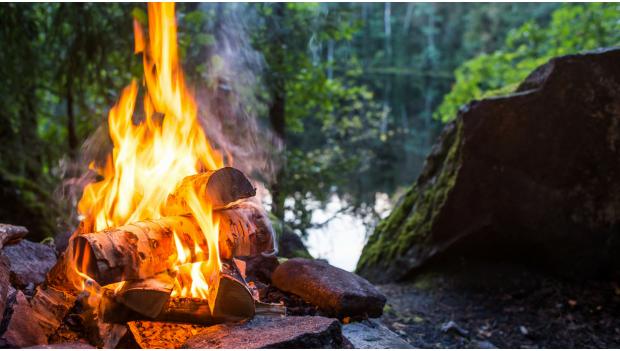 Retrieved from: ReserveAmerica, Thu Jul 8 2021 https://www.reserveamerica.com/articles/camping/top-10-tips-for-campfire-safety Enjoying the pop and hiss of a glowing campfire—not to mention the light and warmth that the fire provides—is one of the most enjoyable parts of camping. But building campfires comes with responsibility. A campfire that is not properly built, maintained, and extinguished can quickly become a hazard to the people, animals, and land around it. In the United States, people start nearly nine out of 10 wildfires. It's important to understand how to safely and responsibly enjoy your campfire. These are the top 10 must-know tips for campfire safety. 1. Know the rules Before you strike a match, make sure you know the fire regulations of the campground or wilderness area in which you are planning to build a fire. Fire rules change, and a campground that allowed campfires the last time you visited my have a temporary ban on them if the risk of wildfires is high. Pay attention to posted signs and check the ranger’s station for current campfire regulations. 2. Use the pit Most campgrounds provide a fire pit or fire ring in which to build a campfire. If a pit is provided, this is the only place you should build a campfire. If you're in a remote area where campfires are allowed but a pit is not provided, dig a fire pit in an open area away from overhanging branches, power lines or other hazards that could catch on fire. Once the pit has been dug, circle the pit with rocks, ensuring there is a ten-foot area around the pit that is cleared of anything that could catch on fire. 3. Build a safe campfire Once your pit is in place, build a safe campfire. Start the fire with dried leaves or grass that will easily catch fire. Next, add kindling, small twigs and sticks that are less than an inch in diameter. As the fire builds, add the largest pieces of wood to the fire. They will keep the fire burning for a longer period of time and provide heat. Keep in mind that your fire does not have to be roaring. A small fire surrounded by rocks will produce plenty of heat for both cooking and warmth. 4. Mind the match Start your campfire with a match and then make sure it is completely extinguished before disposing of it. Pour water over the match or throw it directly into the fire to burn. Never use lighter fluid, gas, kerosene, or other flammable liquids to start a fire. 5. Use local firewood Though it may not be apparent to the naked eye, tree-killing insects and diseases can live on firewood. If you’re going camping six hours down the road and decide to bring firewood from home you could, without knowing it, transport insects and diseases and inadvertently introduce them into the forests where they weren’t found before. That’s why it’s so important to use local firewood. Local is defined as the closest convenient source of firewood that you can find. If possible, pick up firewood from the campground camp store or a nearby location. 6. Keep water handy Don’t start a campfire without having a bucket of water and a shovel nearby. The water can be used to douse any runaway flames and the shovel can be used to throw sand or dirt on any flames that jump the perimeter of your fire ring. It’s also smart practice to keep a few feet of ground outside of your fire ring watered down, so if a stray ember or flame jumps outside of your fire pit, it won’t gain any traction. 7. Pay attention to the wind A strong breeze can spread your fire in an instant. To make sure a sudden gust of wind doesn’t turn your campfire into a wildfire, keep anything flammable, including unused firewood, upwind and at least 15 feet away from the fire. The 15-foot rule also goes for your tent and clothing hung to dry. 8. Be careful with kids and pets It’s not just the risk of forest fires that you need to be mindful of while camping. Campfires are the leading cause of children’s camping injuries in the United States. Teach your kids about the danger of fire and don’t allow children or pets around the campfire unless they are on an adult’s lap. Teach kids how to stop, drop, and roll in the event that their clothes catch on fire. 9. Never leave a campfire unattended A campfire should not be left alone, even for one minute. A small breeze can spread fire quickly, so there should be at least one set of eyes monitoring the fire at all times. Even if you’re leaving the fire for a short period of time, like to take a quick hike, the fire should be completely extinguished. You’ll be able to restart it once you return. 10. Put the fire out properly—every time When you are done with your campfire make sure it is extinguished properly. Dump water on the fire, stir the ashes with a shovel, then dump more water on the fire. The campfire should be cold before you leave it unattended. If it is too hot to touch, then it is too hot to leave. Large logs will be more difficult to extinguish than smaller logs so make sure they are also soaked with water. Move the stones around the campfire to check for hidden burning embers underneath. And never bury coals from the fire—they can smolder and start to burn again. Retrieved from: https://www.erieinsurance.com/blog/bad-highway-driving-habits-pet-peeves
by Justin Metz on May 23, 2022 When the United States Interstate Highway System was created in 1956, it transformed the way Americans traveled. Upon its completion, these new freeways allowed us to drive cross country for the first time, covering hundreds of miles between stops. But over time, the same elements that make highway driving so convenient – namely high speed limits and the elimination of intersections – have also resulted in some bad habits. At best, these highway driving mistakes are an annoyance to other drivers. And at their worst, they can put others in danger, leading to accidents and serious injuries. Below is our list of the 16 biggest mistakes people make when highway driving.
Getting the right protection is never a mistake At Erie Insurance, our promise is simple: to be there when you need us. Whether taking the road less traveled or on your daily commute, you can count on us to provide the protection you deserve – at a price you can afford. Call us today to learn about car insurance from ERIE. 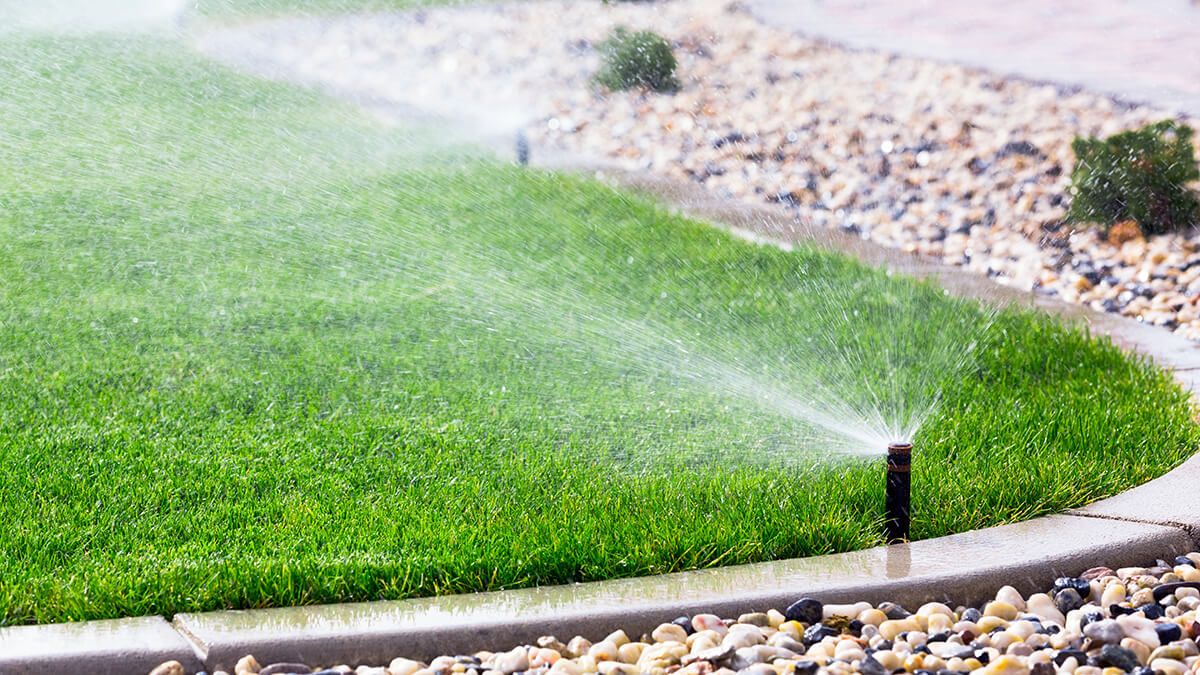 by Jenean McLoskey Retrieved from: https://www.foremost.com/learning-center/inspecting-your-home-after-winter.asp After what felt like an endless winter, everything is slowly starting to thaw out and melt. Spring is one of my favorite times of the year, and as a new homeowner, I am starting to observe new things on my home that I need to inspect, and projects I want to tackle this summer. I purchased my home in the dead of winter with snow piled up on the exterior, so I couldn't fully see everything as much as I would have liked. Now that I have a clear view, it's time to start my spring maintenance checklist and inspect for any damage sustained during winter.
Good luck and happy spring! Written by: April Daniels Have you ever heard the phrase "When it comes to insurance I have the state minimum? Or have you asked your insurance agent to make sure you had the "state minimum" coverage on your policy? What does that really mean? What is required? In the state of Ohio you are legally required to have insurance to drive a vehicle. The minimum required insurance coverage according to the Ohio BMV* is $25,000 for bodily injury/death of one person, $50,000 for bodily injury/death of two or more people, & $25,000 for property damage in an accident. To break this down even further bodily injury coverage is to protect you from a suit brought against you from a party that has had harm done to them in an accident. It is important to note that even if you think the person has not suffered any injury it won't necessarily stop them from filing suit against you. Property damage is coverage for another persons vehicle or property. Why is this amount not enough? The state minimum coverage in Ohio hasn't changed since December of 2013** and before that it had stayed the same for forty-four years. One thing that has changed since 2013 is the rising costs of vehicles and hospital stays Let’s look at just the bodily injury coverage on an auto policy. Think about the last time you went to the hospital; how much was the total cost of your visit before health insurance? According to healthcare.gov site***, the average cost of a 3-day hospital stay is around $30,000. If you were involved in an accident and the person you hit was injured and spent a few days in the hospital, you would exceed your limits of liability. Also, the person you hit can also sue you for loss of wages or for pain and suffering. You could easily be well over the $25,000 limit your policy has coverage for. Now let’s look at the property damage portion of an auto policy. Here is the Edmunds.com**** MSRP pricing on some common new cars you’ll see out on the road this year: 2022 Hyundai Tucson - $24,950-$37,650, 2022 Ford F150 - $37,700-$77,760, and 2022 Jeep Grand Cherokee - $36,980-$44,850. A lot of newer vehicles out today cost more than the $25,000 and if they were totaled in an accident you could easily be over the limit your policy has coverage for. You could also be involved in a multiple car accident and be well over your $25,000 limit of coverage. So, what can happen to you if your limits are not high enough?
If you are in an accident and another person or persons is injured, they can hire a lawyer to attempt to get a judgement against you. They can put a lien on your savings account, home, car, or other financial assets you may have. If you don’t have any assets, they can also attempt to garnish your wages. This is why it is important to have higher limits of liability to protect yourself and your assets. Often higher limits of liability are only a few dollars per month more. Do you know what limits of liability you have on your car insurance right now? If not call us and we can advise you! Sources *https://www.bmv.ohio.gov/dl-mandatory-insurance.aspx#:~:text=Minimum%20required%20for%20insurance%20coverage,property%20damage%20in%20an%20accident **https://www.mirbar.com/library/ohio-is-raising-minimum-liability-auto-insurance-requirements.cfm ***https://www.healthcare.gov/why-coverage-is-important/protection-from-high-medical-costs/ ****https://www.edmunds.com/ Retrieved from: https://www.grangeinsurance.com/tips/does-home-insurance-cover-structural-damage If you’re not sure what kinds of structural repairs are covered by your home insurance policy, you aren’t alone. Home damage happens in many different forms and it’s not always obvious when your home has structural damage. The integrity of your home’s structure can slightly deteriorate over time or get ruined rapidly in a severe storm. Find out what structural damage is covered under most homeowners insurance policies. Plus, learn about additional insurance policies that can help you get the best protection for your home. What is structural damage to a building? You will notice structural damage immediately in many cases. Inside your home, things like ceiling damage, a cracked chimney or slanted floors are easy to spot. Licensed home inspectors primarily look at the four pillars which are the foundation, floor, walls and roof. Cracking, sagging, shifting or missing features on any of the pillars may be considered structural damage if the ruin is severe. Does home insurance cover structural problems?
The part of your home insurance policy that covers the home structure specifically is often referred to as dwelling protection. This sets it apart from other coverages within your homeowners policy such as personal property protection or liability protection. The source of your home damage plays a primary role in whether your home insurance policy will cover the costs for structural repairs. Two of the factors insurance companies usually consider are:
The Insurance Information Institute (III) says, “your homeowners policy pays to repair or rebuild your home if it is damaged or destroyed by fire, hurricane, hail, lightning or other disasters listed in your policy.” However, the following circumstances are not covered by home insurance:
In short, not all ruin from natural disasters is covered by a home insurance policy. Regular wear and tear are not considered covered losses. Luckily, there are different ways to supplement your home insurance to get extra protection for your needs.
5 structural repairs most home insurance will cover Homeowners insurance does cover some structural damage. Here are five home structural repairs or rebuilds you can expect your home insurance policy to cover:
Every insurance company offers different protection, so it’s important for you to know exactly what your policy says. If you have questions about home insurance policies, talk to us, your local independent agent to learn more. How to fix structural damage Find the right licensed contractor to complete structural repairs on your home. Roofing contractors can repair your roof and replace damaged or missing shingles. Construction contractors can repair cracked walls, fix slanted floors and mend issues in your home foundation. Choose home coverage that meets your needs You need a home insurance policy that offers great coverage with discounts and multiple ways to pay. Choose Grange Insurance to protect your home and property. You can expect great customizable dwelling, personal property, personal liability, equipment breakdown, identity theft coverage and more. Talk to a us today for more details. This article is for informational and suggestion purposes only. Implementing these suggestions does not guarantee coverage. If any policy coverage descriptions in this article conflict with the language in the policy, the language in the policy applies. For full details on Grange’s home insurance coverages and discounts, contact your local independent agent. References Home Inspection Insider Insurance Information Institute (III) Floodsmart.gov Insurance.ca.gov |
Contact Us(740) 927-1469 Archives
August 2023
|
Navigation |
Connect With Us |
Contact Us |
Location |


